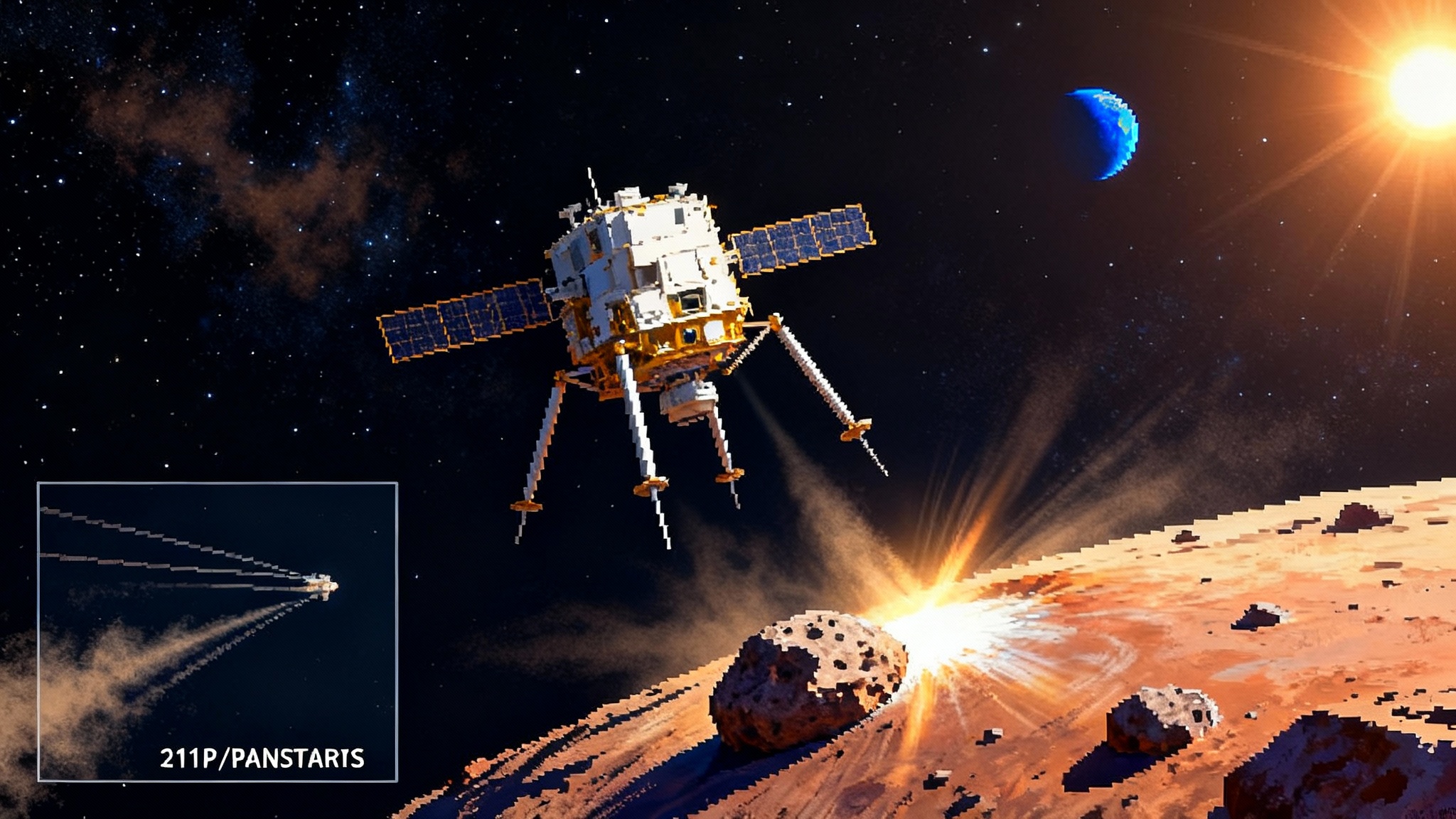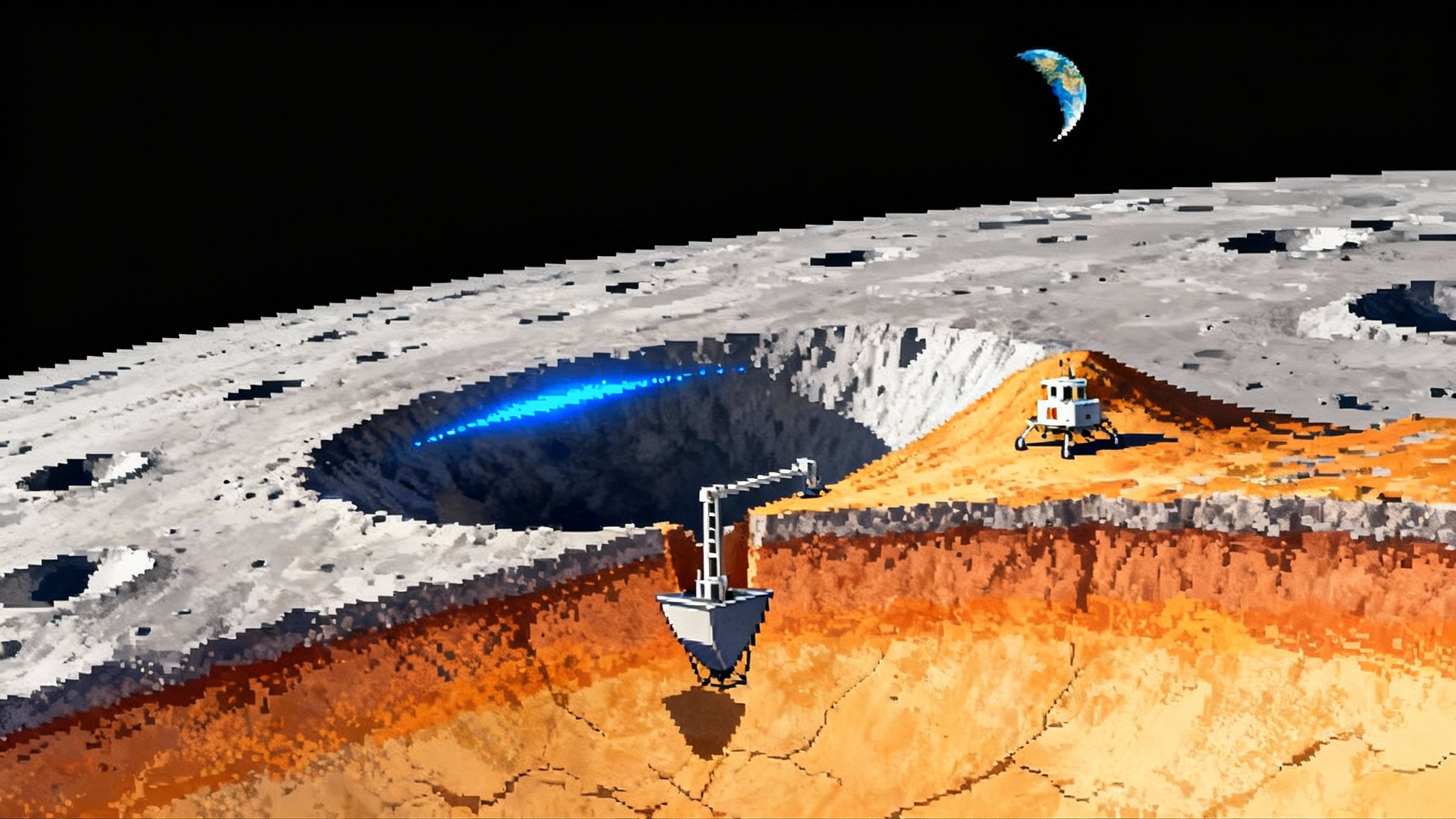Mars Samples at Stake: NASA’s 2025 Reset vs Tianwen-3
NASA has launched a dual-architecture race to bring Perseverance's samples home while China advances Tianwen-3 for a 2028 to 2031 return. What changed, the science we must not lose, and how the outcome could reshape Mars exploration this decade.

What changed in 2025
On January 7, 2025, NASA made a pivotal call. Rather than march forward with a single complex design, the agency opened a competitive lane for two landing architectures to return the Perseverance rover's cache to Earth, with a downselect planned for the second half of 2026. The reset also simplified several subsystems, including a smaller Mars Ascent Vehicle and a streamlined sample loading approach, while keeping the European Space Agency's Earth Return Orbiter in the loop for orbital capture and return. The aim is to regain schedule credibility and shave cost while preserving the core science promise of Mars Sample Return. See the NASA dual-architecture reset.
This is not just a procurement nuance. NASA is deliberately injecting competition and design diversity into the riskiest phase of MSR. One candidate leans on proven entry, descent, and landing heritage from Curiosity and Perseverance. The other invites industry to bring fresh landing solutions that could simplify surface operations and reduce total mass. Both options take advantage of a radioisotope power system in place of solar arrays, a move that trades panel complexity for dust season robustness, thermal margin, and simpler fault management.
Critically, the revised plan narrows where the hardest work happens. The sample loading redesign aims to mitigate dust on the orbiting sample container surface, which makes backward planetary protection easier to implement. The European Earth Return Orbiter remains the capture and return workhorse. ESA continues to evaluate the U.S. reset, a reminder that MSR is as much an alliance management exercise as it is an engineering campaign.
For context on evolving interplanetary logistics and risk posture, compare with ESCAPADE on New Glenn.
A tale of two timelines
China's Tianwen-3 has steadily advanced toward a 2028 launch target, with a three year roundtrip that points to a 2031 Earth return. The mission uses two Long March 5 launches, one for the lander and ascent vehicle, one for the orbiter and return capsule, and it aims to collect and seal samples, then conduct an ascent, orbital rendezvous, and direct Earth return in a single campaign. Chinese officials have described multi mode sampling, including scooping, drilling to roughly 2 meters, and even drone assisted pickup near the landing site. The government has also invited international participation on the orbiter and service module. See China's Tianwen-3 briefing.
The contrast with NASA's posture is clear. The United States has a world class cache already assembled on Mars, deep institutional experience, and a maturing return chain anchored by ESA's Earth Return Orbiter. China has a simpler, tightly integrated architecture that tries to do everything in one go, with fewer interfaces and a direct Earth reentry. If both programs proceed, the likely first returner is the one that hits its launch window with margin and keeps interfaces under control.
The cache that changes the calculus
Perseverance has crossed a threshold that matters for strategy. It now holds more than thirty sealed tubes spanning igneous and sedimentary lithologies, plus regolith and an atmospheric sample. Ten backup tubes sit in the Three Forks depot inside Jezero Crater, while the rover carries the rest. Since late 2024 the team has pushed onto the crater rim, where diversity expanded. The cache includes water altered mudstones, carbonates and sulfates, igneous targets for radiometric clocks, and rocks with minerals such as phosphates and iron sulfides that on Earth often trace environmental change and sometimes biological processes. In other words, there is now enough choice to curate an optimized set for a smaller, more focused return.
This is why the dual architecture reset matters. If the flight system's mass and complexity drop, NASA can still aim to return roughly 30 tubes, but the science team can prune to a smaller number if needed without collapsing the mission's scientific value. The rover's mobility, the distributed depot, and the diversity at Jezero's rim together provide the flexibility that a descoped return needs.
What minimum viable science looks like
If budget, mass, or risk force a narrower payload, the right question is not how many tubes, but which questions must still be answered on Earth. A minimum viable science set should be designed to test three pillars that motivated MSR in the first place: habitability, timing, and context.
-
Habitability and biosignature preservation
- A pair of fine grained sedimentary cores from lake bed or deltaic mudstones rich in clays. These preserve organics and microtextures that are impossible to interrogate fully with rover instruments.
- One carbonate bearing rock that records water chemistry and potential ancient CO2 cycling.
- One sulfate rich sample that captures evaporative processes and oxidation gradients important for redox chemistry.
-
Timing and geochronology
- Two to three igneous rocks suitable for high precision radiometric dating, sourced from different units. These anchor the timeline for Jezero's basin fill and lake episodes, and they calibrate crater counting statistics across Mars.
-
Environmental and contamination controls
- One regolith sample for volatile analysis, space weathering, and regional dust provenance.
- An atmospheric sample, already cached, to link noble gases, isotopes, and volatiles to rock data and to validate planetary protection handling.
-
Cross checks and process tracers
- One sample with phosphate or iron sulfide phases that capture diagenesis, redox interfaces, and possible biosignature traps, whether biotic or abiotic.
- One duplicate of a key sedimentary lithology to allow destructive testing in separate labs and to validate protocols.
That adds up to roughly ten to twelve tubes, a fraction of the full cache. Crucially, this set still lets labs on Earth run the instruments that do not fit on a rover: nano scale tomography, synchrotron based X ray spectroscopy, secondary ion mass spectrometry at extreme precision, and full suite isotopic systems for age and process. The goal is to retain the ability to falsify or support biological interpretations by testing textures, organics, and mineral microenvironments at resolutions and sensitivities unreachable in situ.
The simplified path NASA chose, and why it helps
Two 2025 changes have outsized impact on risk.
-
Smaller MAV and RPS powered lander
A smaller ascent vehicle reduces structural and thermal loads and simplifies integration, while a radioisotope power system eliminates dependence on sun angles and panel cleaning. That buys entry, descent, and landing margins and more forgiving surface timelines. -
Streamlined sample loading for planetary protection
By minimizing dust on the orbiting sample container exterior, the plan makes backward planetary protection more tractable. That has ripple effects. Capture and containment in Mars orbit become cleaner, the Earth Entry System interfaces simplify, and curation on Earth faces fewer unknowns about surface contaminants.
These changes do not remove the hardest steps. Launching the MAV from Mars, autonomous orbital rendezvous, capture, and sterile containment remain formidable. But they concentrate complexity where it must be, rather than spreading it across power, deployables, and surface mechanisms that weather and dust can degrade.
The geopolitical stakes
For decades, Mars sample return was a U.S. dream endorsed across three decadal surveys. Now the first nation to land samples in a U.S. level curation facility, or a Chinese facility that mirrors that standard, will define the template for planetary sample sharing, access policies, and attribution of scientific credit on a once in a generation dataset. Recent big science results such as Juno's 2025 Io findings show how pivotal flagship missions can be for setting research agendas and budgets.
If Tianwen-3 hits its 2028 to 2031 window, China will claim a historic first for Mars. That brings prestige, but it also shapes norms. International participation and open access to samples would amplify the mission's scientific reach and legitimacy. If access narrows, other nations may double down on complementary missions or new alliances.
If NASA's reset restores a credible mid 2030s return, the United States and Europe can still deliver the most geologically diverse, habitability focused set yet collected from another planet. Perseverance's cache skews toward environments where liquid water interacted with rock, which is exactly where biosignatures could survive. That scientific differentiation would matter even if the United States returns second.
The soft power angle is real but the scientific outcome need not be a zero sum contest. Two different sample suites from two regions, acquired by different strategies, would let labs test hypotheses across environments and timeframes. That synergy is the best case for the planet, if politics and funding allow both to fly.
Scenarios that could reshape Mars priorities this decade
-
China returns first, NASA follows with a richer but later set
The likely near term effect is increased U.S. investment in curation, lab readiness, and graduate training to mine the returned samples quickly and broadly. Flagship robotic missions may shift toward complementing the returned suites, for example by targeting carbonate or silica rich terrains beyond Jezero. For a view of China's broader sample strategy, see the Tianwen-2 sample mission. -
NASA accelerates enough to narrow the gap
If the dual architecture competition yields a simpler lander and a robust schedule, and if funding stabilizes, NASA can still deliver before 2040 with a diverse set. The political narrative becomes one of persistence and quality. Expect more emphasis on planetary protection infrastructure and on rapid, open sample distribution policies. -
Budget turbulence forces a smaller U.S. return
A minimum set of ten to twelve tubes still answers the core questions about habitability, timing, and context. In this scenario, NASA would likely frame a second return in the 2040s or 2050s as a follow on, using lessons from the first campaign to reduce per sample cost. -
International relays and hybrid architectures
ESA's Earth Return Orbiter is already integral. If schedules diverge, future Mars orbiters from the United States, Europe, or other partners could provide relay or navigation services that de risk portions of either campaign. Shared communications and navigation services can be decisive margins at Mars.
What Perseverance enables next
Because the rover has over thirty tubes, mission planners can optimize the sample pickup route around engineering constraints. If the selected lander architecture favors short traverses, the team can choose a set clustered near the crater floor and rim access points. If the lander can loiter through a dust season thanks to RPS, planners might stretch to grab a high value carbonate or a second mudstone that requires more driving and time.
The cache also buys policy options. NASA can commit to a baseline set and a stretch set, with a clear decision gate tied to lander health and seasonal constraints. That approach makes priorities transparent to Congress and to partners, and it allows scientists to design tiered lab campaigns and curation workflows in advance.
For how new launch options may reshape deep space logistics, see ESCAPADE on New Glenn.
How to keep the science first
-
Lock the science floor before the downselect
Define the minimum viable suite explicitly, by tube ID, lithology, and question addressed, and separate it from the stretch goals. This will keep trade studies honest and prevent late scope creep. -
Invest in curation and planetary protection now
The new loading approach reduces risk, but Earth based containment, sterilization protocols where required, and ultra clean sample handling will decide how quickly and broadly the community can work. These investments return scientific value regardless of who lands first. -
Publish an access policy that matches the moment
Transparent timelines for initial science teams, a rapid path for broader community proposals, and global participation will help turn returned rocks into shared knowledge faster. Clear rules also attract early career talent to the field, which is a hidden dependency for turning samples into discoveries. -
Keep Perseverance mobile and scientifically aggressive
The rover's work between now and pickup is the last chance to increase optionality. The more diverse the cache, the better a descoped return performs.
Bottom line
The MSR reset in 2025 was not a retreat. It was a deliberate move to buy back schedule realism, contain cost, and keep the scientific heart of the campaign intact. The strategic gamble is that a competitive dual architecture and a trimmed surface system will be enough to thread a narrow path between budget reality and scientific ambition. Meanwhile, Tianwen-3 is preparing a direct path to a 2031 return that would mark a historic first. If the United States and Europe keep the science floor high, and if China couples speed with openness, the next decade could deliver two different windows into ancient Martian environments rather than one.
Either way, the story is no longer whether humanity will bring Mars to Earth, but how many stories those rocks will tell, and who gets to listen first.








